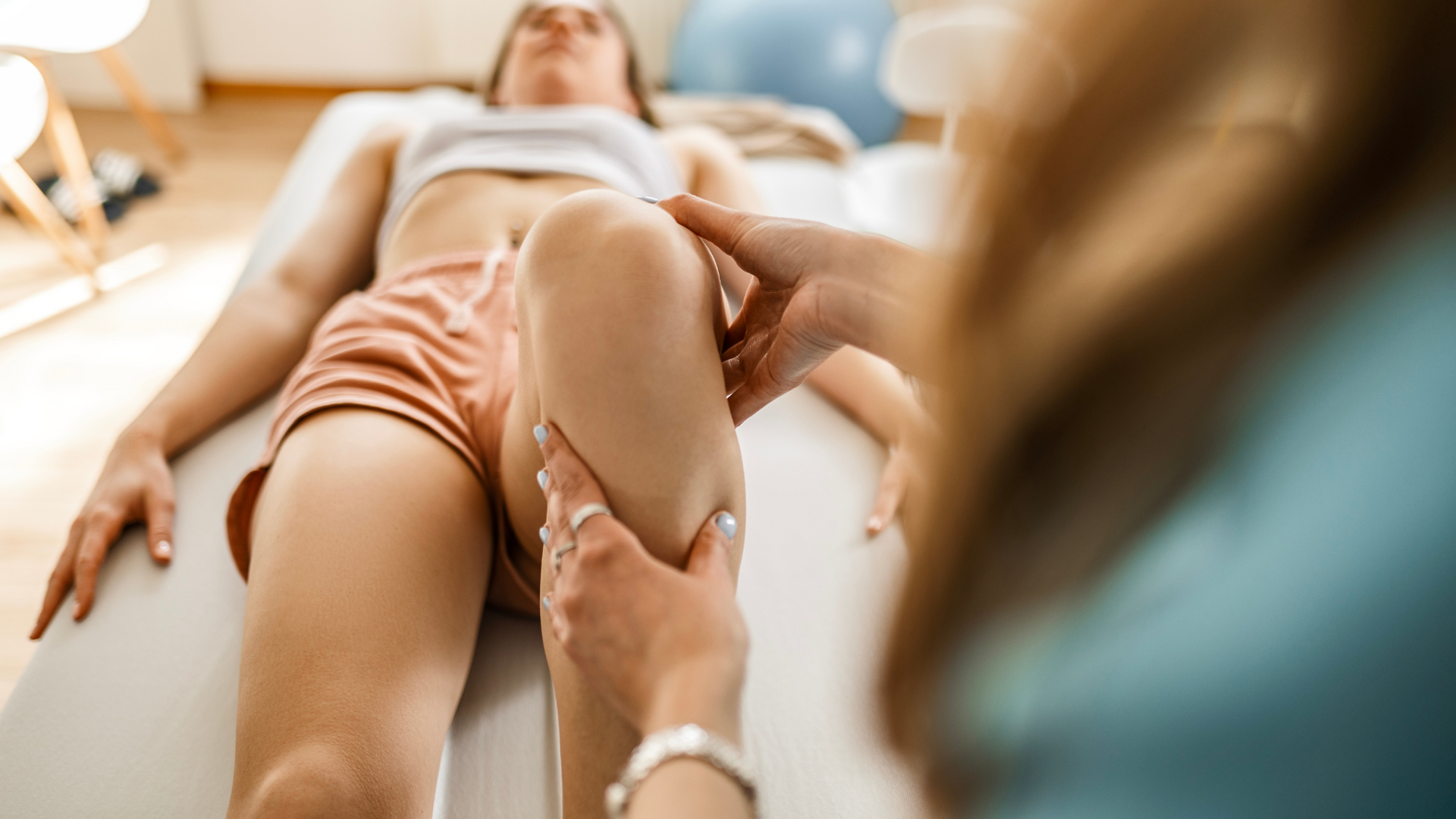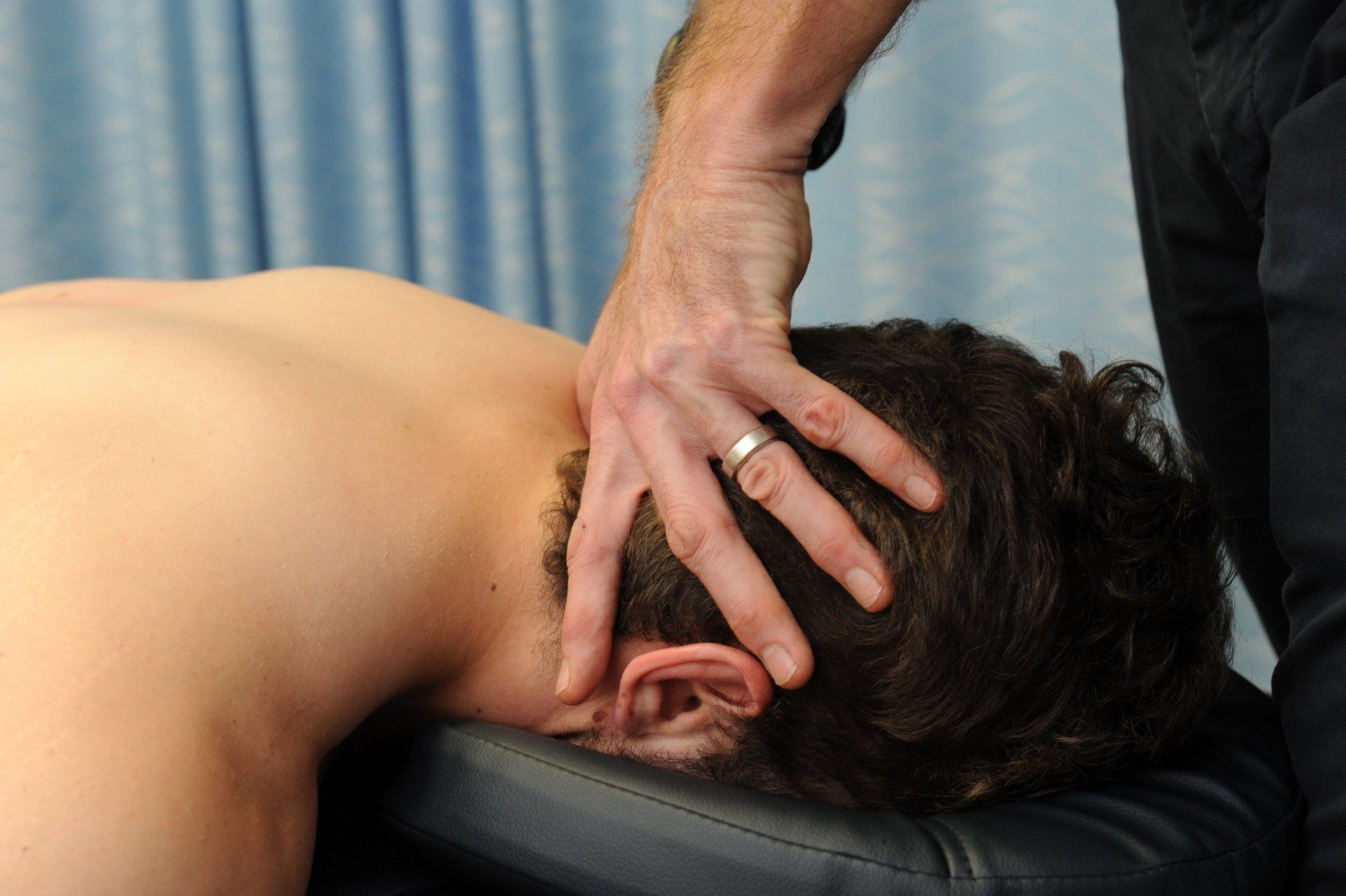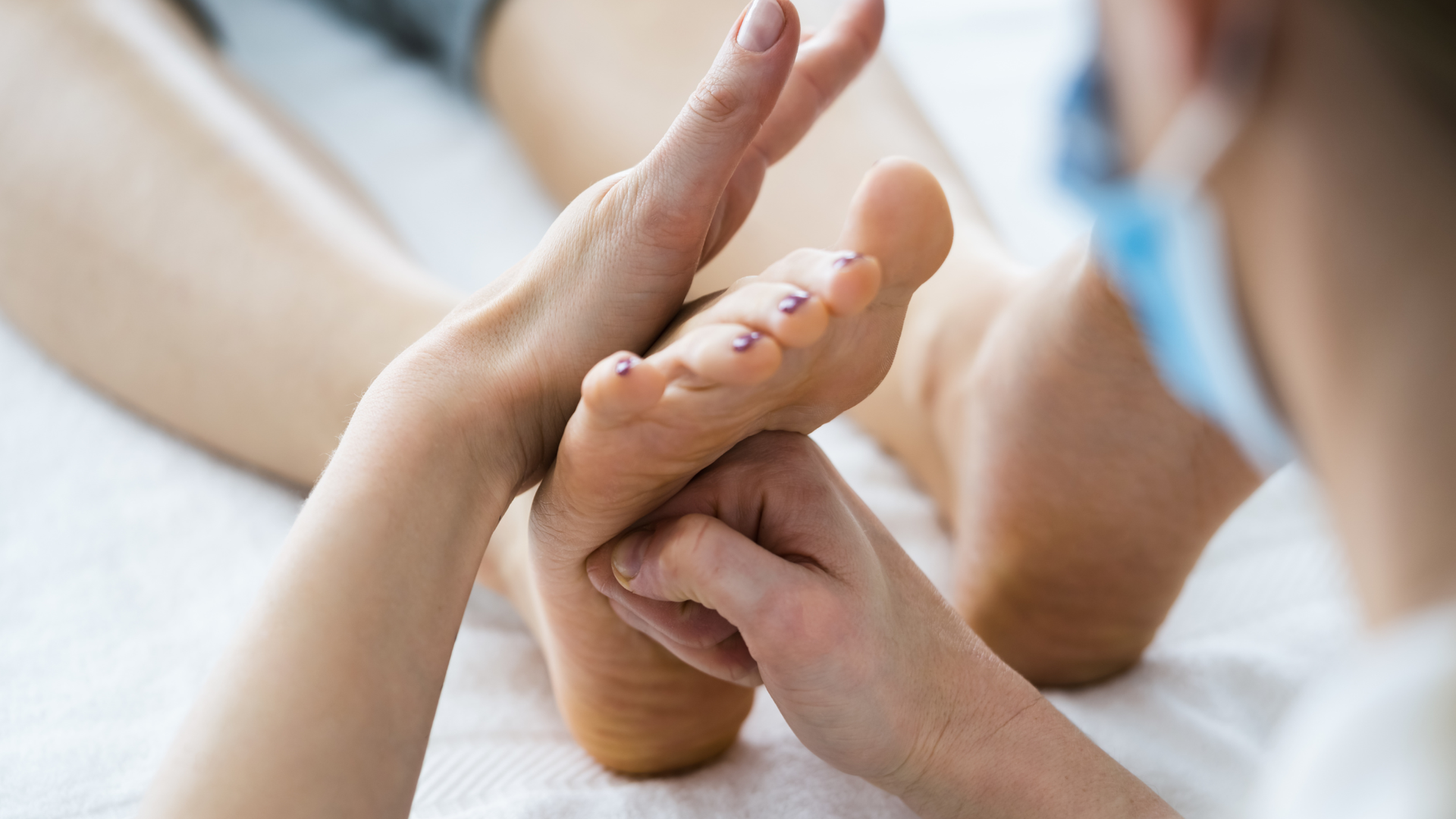Lower Leg - Shin Splints
Getting back into running and got shin pain? You're not alone.

Shin pain, and in particular shin splints, is a common presentation to physio clinics. It’s an overuse injury of the lower extremity, often seen in athletes and defence force personnel. In simple terms, shin splints is pain over the anterior tibia that comes on with exercise and is an early stress injury in the continuum of tibial stress fractures1,2,4,6,7.
First up, let’s get this out of the way. Most people (and even plenty of medical people) refer to pain in the shins as shin splints.
The term came about because the area of discomfort is the shinbone, or tibia, and some (but not all) of the symptoms can be sharp and stabbing. It’s not a particularly accurate name though, and doesn’t tell us anything about the actual injury, the process that is going on, or how to fix it. And it conjures up thoughts of either the bone underneath splintering, or of having to have you leg in a splint, both of which could ‘kind of’ happen, but let’s not get ahead of ourselves.
What is it really?
A more accurate name for shin splints, is medial tibial stress syndrome, or MTSS. While this is a little harder to remember, it is a much more descriptive and accurate term for the injury. Essentially, when we have “Shin Splints”, there is a stress response happening along the medial border of the tibia. This stress response is sufficient to irritate the nerve endings in the bone and wham, we get shin pain.
A little bit of anatomy
To understand the how and why behind MTSS, let’s look at the underlying anatomy. First up, the lower leg houses a lot (and I mean a lot!) of muscles, nerves, and blood vessels. These are arranged into compartments – essentially bundles of muscles enclosed in a fibrous fascial layer. And these muscles and the outer fascial layers attach to the bone. Click here to see what we mean.
Active muscle stresses bone
When we exercise, the contracting muscles, anchored strongly to the bone, produce movement and stability at the ankle and foot. They also need extra oxygen and so our heart pumps more blood into the region. This increases the volume of blood in the compartments, straining the fascia. Combined with the pull effect of the muscles, this increases the stress on the bony attachment (periosteum) causing microtrauma3,4.
This microtrauma is a normal part of exercise and a key part of how our skeleton adapts and gets stronger in response to exercise. If, between exercise bouts, we give our bodies enough time to recover and repair, then the microtrauma to our shins can recover. If we don’t, the microtrauma accumulates, eventually eliciting a pain response and bingo, we have MTSS!
More than just load
So, MTSS is an issue of load, or more accurately, a lack of recovery. So why do some people get it, and others don’t?
The reasons are multifactorial. Some people have naturally tighter compartments, exposing the tibia to stress load earlier. Other people have tightness or weakness in certain muscles, which impacts the development of shin pain. Biomechanics such as foot posture or lower limb valgus can impact forces through the lower leg, while training age (ie. the total training time/ experience the athlete has in that aspect of physical training) and training volumes also play a role3,4. In our younger athletes, skeletal maturity is an important consideration, remembering that kids bones mature at very different rates.
Who gets it?
MTSS is more common in sporting populations, particularly those requiring a lot of running, jumping and change of direction1,4,5. So people involved in basketball, hockey, athletics, netball, soccer and AFL are all susceptible to MTSS. If you’re female, have increased BMI, higher navicular drop, previous running injury, and/or greater hip external rotation with the hip in flexion, you have a higher risk of developing MTSS3,5,6,7.
And you don’t need to be an elite athlete. In many instances, MTSS presents in people playing social sport, those returning to sport after a break or those just trying to increase their general fitness through running3.
Diagnosing MTSS
In most instances, diagnosing MTSS is relatively straight forward. A thorough understanding of the volume and type of exposure to load, both recently and in the past, combined with reported symptoms and location of pain are usually enough to make a diagnosis of MTSS3,4.
Biomechanical assessment is important to identify the factors that might be contributing to MTSS. Running and walking patterns, foot posture, hip, knee, and trunk control are all important assessments in the presence of MTSS. Individual muscle groups of the lower leg should also be assessed for strength and tightness6,7.
In some instances, medical imaging is indicated, particularly if symptoms have persisted for long periods of time or if pain is not settling with rest3,4. Keep in mind that MTSS is a continuum of a bony stress response, so there are varying degrees of injury associated with it.
Any red flags?
There are a couple of important diagnostic considerations with pain in this area, notably compartment syndrome, popliteal artery entrapment, and osteosarcoma. While these are less common, they need to be excluded in a thorough assessment2. Chronic persistent MTSS can progress to a stress fracture and even a full tibial fracture, in which case you just might need that splint, so best see your health professional for assessment and management.
Management of MTSS
Management of MTSS needs to address the load/recovery issues as well as the biomechanical and soft tissue contributions to symptoms2.
Addressing load and recovery issues is critical. This usually requires a reduction in load exposure and modification of activity. Some sessions might need to be substituted with other activities such as swimming or cycling, maintaining cardio fitness while letting the injury recover. Logging exercise sessions for duration and intensity alongside pain experiences can be valuable for identifying activity patterns contributing to MTSS.
Meanwhile, physiotherapy will help with biomechanical issues, running gait, reducing muscle tightness, improving joint mobility, taping techniques (eg. low dye taping for flat foot) and progressive strengthening programs.
The Take Home
MTSS is a modifiable injury that generally makes a full recovery over a 3-6 month period3. People respond well to load reduction, strengthening and stretching exercises, and gait re-education, allowing for a gradual return to sport and activity as symptoms subside. Having a structured plan from a physiotherapist that combines treatment of biomechanical issues with load and recovery management is integral to a successful outcome and reducing the risk of future episodes of MTSS.
Got shin pain when you exercise and think it might be shin splints? Give us a call now.
At Movement for Life Physiotherapy, we can assess and diagnose the cause of your shin pain and let you know whether you do have shin splints or if there is something else going on. With a clear diagnosis and tailored management plan, we'll help get you back to the things you love sooner.
Give us a call now or click on BOOK AN APPOINTMENT to book online.
References
- Becker J, Nakajima M and Wu W (2018) Factors Contributing to Medial Tibial Stress Syndrome in Runners: A Prospective Study. Medicine and Science in Sports and Exercise, 50(10), 2092-2100, DOI: 10.1249/mss.0000000000001674
- Medial Tibial Stress Syndrome. Accessed at https://www.physio-pedia.com/Medial_Tibial_Stress_Syndrome
- Menéndez C, Batalla L, Prieto A, Rodríguez MA , Crespo I and Olmedillas H (2020). Medial Tibial Stress Syndrome in Novice and Recreational Runners: A Systematic Review. International Journal of Environmental Research and Public Health, 17, 7457, DOI: 10.3390/ijerph17207457.
- Moen MH, Tol JL, Weir A, Steunebrink M and De Winter TC (2009) Medial Tibial Stress Syndrome: A Critical Review. Sports Medicine, 39 (7), 523-546.
- Newman P, Witchalls J, Waddington G and Adams R (2013). Risk factors associated with medial tibial stress syndrome in runners: a systematic review and meta-analysis. Open Access Journal of Sports Medicine, https://www.ncbi.nlm.nih.gov/pmc/articles/PMC3873798/pdf/oajsm-4-229.pdf
- Reinking MF, Austin TM, Richter RR and Krieger MM (2017). Medial Tibial Stress Syndrome in Active Individuals: A Systematic Review and Meta-analysis of Risk Factors. Physical Therapy, DOI: 10.1177/1941738116673299
- Winkelmann ZK, Anderson D, Games KE and Eberman LE (2016). Risk Factors for Medial Tibial Stress Syndrome in Active Individuals: An Evidence-Based Review. Journal of Athletic Training, 51(12), 1049–1052, DOI: 10.4085/1062-6050-51.12.13








